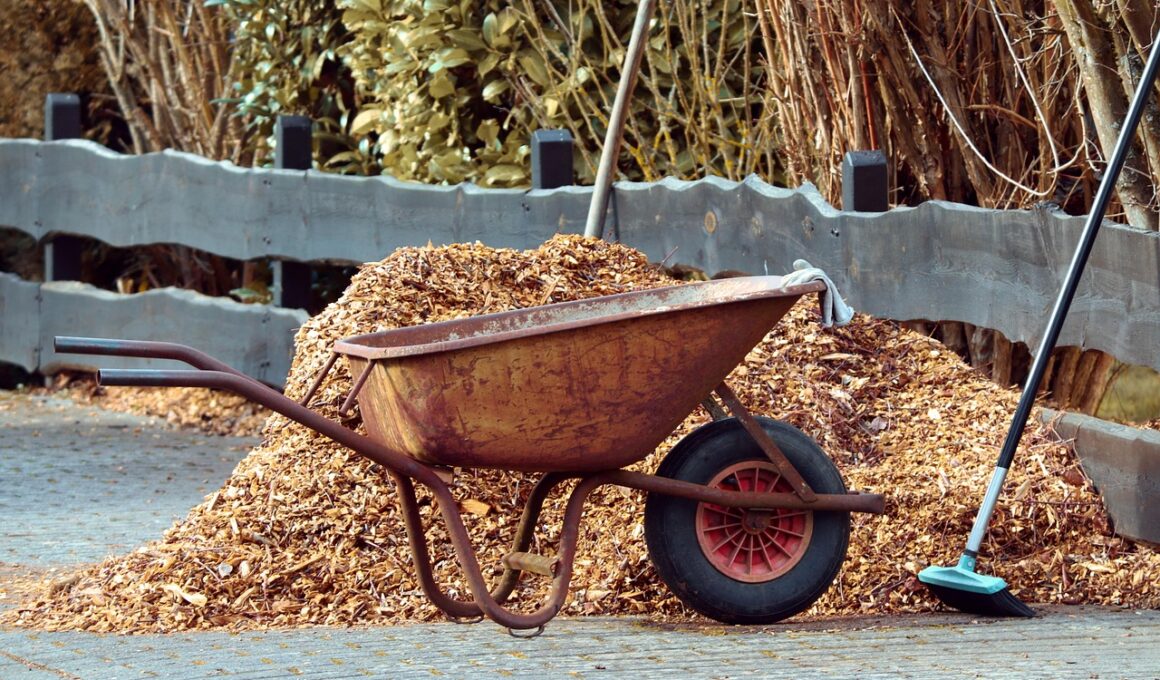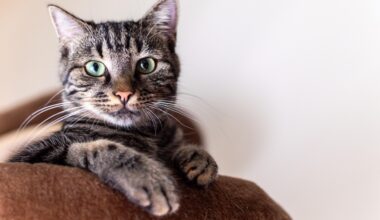Choosing Non-Toxic Mulch for a Cat-Friendly Garden
A cat-friendly garden is essential for the well-being of your feline friends. When creating such a space, it’s important to consider the types of materials used. Mulch serves various purposes, such as retaining moisture and suppressing weeds, but choosing non-toxic options is critical for your cat’s safety. Many common mulches contain harmful substances, so be sure to avoid those. For instance, cocoa mulch has theobromine, which is toxic to cats. Pine bark can also pose risks if ingested in large quantities. Instead, consider alternatives like shredded leaves, straw, or wood chips from untreated sources. Not only are these environmentally friendly options, but they also provide a safe environment for your pets to enjoy their outdoor space. Moreover, these types of mulch can break down over time, enhancing your soil’s quality. By focusing on non-toxic mulching options, you will create a vibrant garden that promotes healthy growth while ensuring your cats have a safe playground. Finally, always monitor your garden and your cats to ensure their safety in the outdoor environment.
Selecting the right mulch is just the beginning. You might wonder what alternatives exist and which ones provide both safety and functional benefits for gardening. Here are some non-toxic mulch options that work well in cat-friendly gardens. First, consider using straw as a mulch; it’s a biodegradable choice, providing insulation and moisture retention. Second, shredded leaves are an excellent option since they break down quickly and improve soil structure, plus they’re a free resource readily available each fall. Third, wood chips from untreated wood can deter weeds and retain moisture. However, avoid cedar chips as they can emit oils that might irritate pets. Fourth, grass clippings, when dried, can be used to suppress weeds and maintain soil moisture, but be cautious not to pile them too thickly, as they tend to mat down. Fifth, using compost as mulch not only nourishes the ground but is also safe for your pets. Each of these options contributes to a thriving, beautiful garden that is safe for your beloved cats.
Essential Considerations for Cat Safety
Keeping your cats safe while they explore the great outdoors should be a top priority. One way to do this is by ensuring that all materials in your garden are non-toxic, including mulch. Beyond mulch, consider the plants you choose, as some common garden plants can be toxic to cats. However, many cat-friendly plants can enhance your garden’s beauty without compromising your pets’ safety. For example, catnip, valerian, and wheatgrass are excellent choices known to attract felines. Additionally, creating sheltered areas within the garden can give your cats places to hide and explore. These spots may include low-lying plants or decorative elements that add texture while providing protection. You can also erect small fences or use natural barriers to delineate safe zones within the garden. Remember that every cat has different preferences, and allowing them to roam safely is key. Consider their unique personalities and habits while designing your garden so it best serves their needs and keeps them safe in the process.
Moreover, ensuring your garden is free of hazardous chemicals is crucial. Many traditional gardening practices involve pesticides and fertilizers that could be harmful to cats if ingested or through skin contact. Opting for organic gardening techniques can go a long way in achieving a safer outdoor space for your pets. Utilizing natural pest control methods like beneficial insects and companion planting can help minimize the need for artificial chemicals. For example, planting marigolds can deter pests while attracting beneficial creatures like ladybugs, which feed on aphids. Additionally, creating a compost pile enriches your garden while reducing waste and fostering a healthy ecosystem. Utilizing a natural approach to pest management promotes plant health, contributing to a robust environment for your cats to enjoy. Transitioning to these methods may take time and research, but the result will be rewarding not just for your garden’s health, but also for your cats’ safety and happiness. Join the growing community of environmentally conscious gardeners who are prioritizing safety and sustainability in their gardens.
Creating a Safe Exploration Space
Providing a stimulating environment for your cats enhances their mental and physical well-being. When creating a cat-friendly garden, think about incorporating varied landscaping elements. These can include raised beds, rocks, and tunnels. Raised beds can elevate plants away from ground pests and make it easier for cats to navigate the area. Introducing rocks creates natural hiding spots and climbing opportunities, allowing your cats to enjoy their instincts. Tunnels crafted from natural materials can encourage them to explore while ensuring they remain within a safe boundary. As a pet owner, you have the complete authority to customize your outdoor space in ways that cater to your cats’ playful and curious nature. Engaging your cats with innovative elements not only piques their interest but also increases their interaction with the garden. For instance, consider a small water feature or birdbath to attract local wildlife, allowing your cats to observe without putting them at risk. Ultimately, designing the garden with your pets’ needs in mind will contribute to the overarching goal of a safe and enjoyable outdoor experience.
Lastly, aesthetics matter too! Ultimately, a beautiful garden is pleasing to the eye while being functional for your cats. Use attractive non-toxic plants that enhance your garden’s visual appeal. Grouping plants by height, color, and texture creates a visually engaging environment, while also providing hiding spots for curious cats. Consider plants that are appealing to cats, such as cat grass alongside vibrant flowers. Additionally, using decorative stones and garden ornaments can enhance the visual interest while helping delineate areas. Furniture such as benches and lounging spots can create spaces for both the cats and pet owners to enjoy together. Thoughtful consideration in choosing materials and arrangements will create a welcoming atmosphere, encouraging interactions between you and your feline friends. Always prioritize safety while illustrating personality through landscaping. A well-styled garden not only enriches your outdoor space, but it also serves as a haven for your pets, making both you and your cats happy. Consequently, ensuring these areas are beautiful yet safe will lead to a significantly enhanced shared experience.
Conclusion: A Safe Garden for Cats
Creating a cat-friendly garden requires careful thought and planning. By selecting non-toxic mulch and plants, employing organic gardening methods, and designing inviting spaces, your garden can be an engaging haven for your feline friends. Prioritizing safety while considering aesthetics is key. Allow your cats to enjoy the outdoors without compromising their well-being. Don’t overlook the importance of different garden elements that can stimulate their natural instincts to explore and play. Remember to consult your local gardening resources for more ideas about safe plants and gardening practices. Always be vigilant about potential hazards and monitor your garden’s environment regularly. In conclusion, a thoughtful approach to crafting a cat-friendly garden not only enriches your cats’ quality of life but also fosters a rewarding gardening experience for you. Embrace the challenge and enjoy making changes to develop a beautiful, safe outdoor haven for your furry companions. This effort will create a joyful space that you will both cherish for years to come!
Your involvement doesn’t end once the garden is set up; ongoing maintenance and adjustments are essential for ensuring continuous safety and enjoyment for your cats. Keep a keen eye on which plants thrive and how your cats interact with them. It might be necessary to change certain plants or mulch types as seasons change or your cats’ behaviors evolve. Also, it’s beneficial to introduce new elements in the garden over time. Rotating the types of play structures or plants can reinvigorate their interest in the space and promote healthy habits like exploration and exercise. Regular inspections for any signs of pests or intrusions will help maintain a safe environment for your pets as well. Maintaining a cat-friendly garden is indeed an ongoing commitment, but the rewards of a vibrant, interactive space are immeasurable. Consider involving the whole family in keeping the garden safe and thriving. This can turn the gardening process into a fun and collaborative effort. In essence, your dedication will lead to a delightful outdoor sanctuary that nurtures not just your flowers, but also the emotional and physical well-being of your beloved cats.


